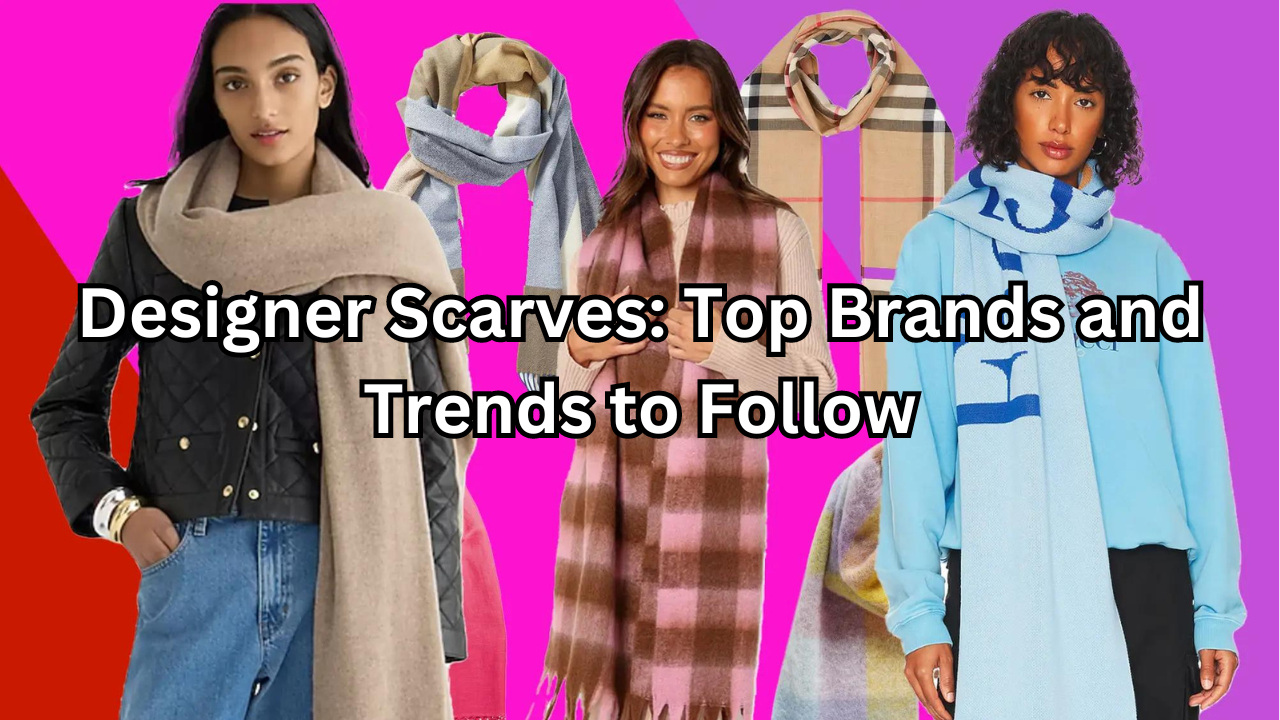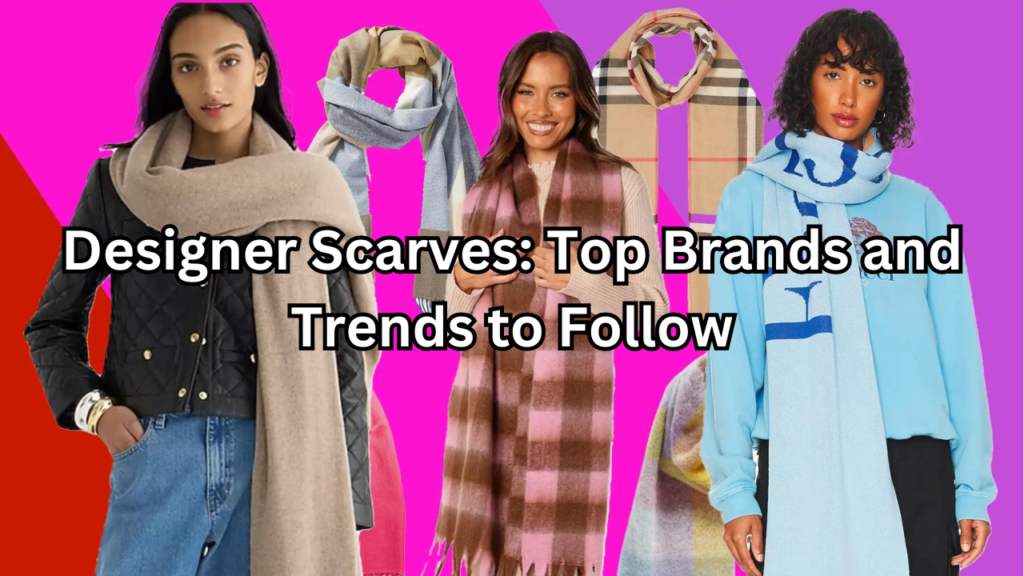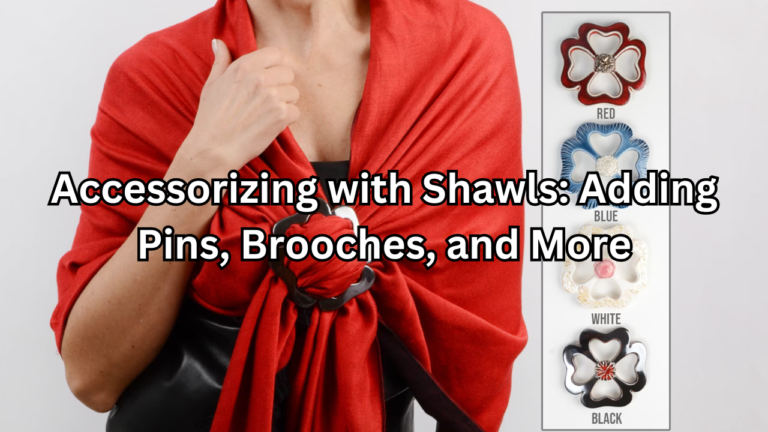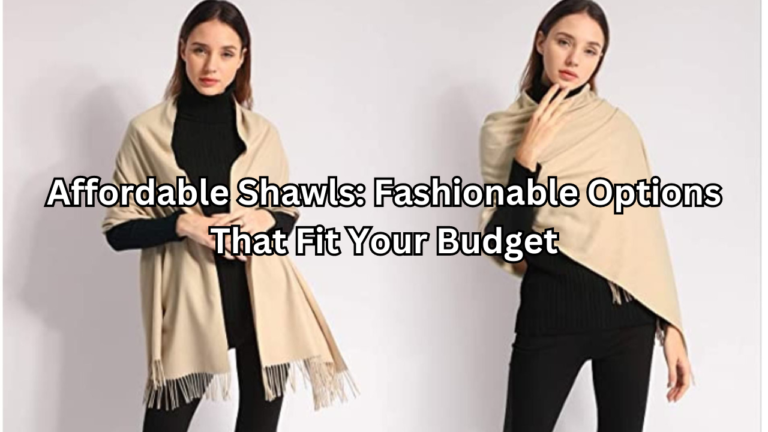

Table of Contents
Introduction
In the ever-evolving world of fashion, designer scarves hold a unique and timeless allure. These luxurious accessories are more than mere adornments; they are essential elements that can define and elevate an outfit. From their ability to add a splash of color to their role in providing warmth, designer scarves blend functionality with high fashion.
Staying updated with the latest brands and trends in designer scarves is crucial for fashion enthusiasts and style connoisseurs alike. Top brands continually push the boundaries of design, offering fresh and innovative takes on this classic accessory. By keeping abreast of the latest trends, one can ensure their wardrobe remains both sophisticated and current, reflecting the dynamic nature of modern fashion.
History of Designer Scarves
Evolution of Scarves from Functional to Fashion Statements
The humble scarf has a storied history that spans centuries, evolving from a practical garment to a coveted fashion accessory. Originally designed for warmth and protection, scarves have been worn across various cultures, serving both functional and ceremonial purposes. Ancient civilizations, including the Egyptians and Romans, used scarves for practical reasons, such as shielding from the sun or cold. Over time, the scarf’s role began to shift from purely utilitarian to a symbol of style and status.
In the early 20th century, scarves began to make their mark as a fashion statement. The introduction of designer scarves marked a significant shift, as these accessories began to be crafted with intricate patterns and luxurious materials. Designers started to view scarves as opportunities for artistic expression, allowing them to experiment with colors, fabrics, and designs that reflected the spirit of the times.
Key Milestones in the Designer Scarf Industry
- Hermès and the Birth of the Iconic Silk Scarf (1937) Hermès revolutionized the scarf industry with the launch of its first silk scarf, the “Carré.” This 90×90 cm square scarf, adorned with elaborate designs and vibrant colors, set a new standard for luxury scarves. The Carré became an instant classic and remains one of the most iconic pieces in the designer scarf market.
- The Rise of Gucci’s Signature Prints (1950s) In the 1950s, Gucci introduced its distinctive GG logo and bold patterns to the world of scarves. This move not only established Gucci as a major player in the luxury accessory market but also demonstrated how designer scarves could serve as powerful branding tools.
- The Launch of Louis Vuitton’s Monogrammed Scarves (1980s) Louis Vuitton’s introduction of monogrammed scarves in the 1980s marked a milestone in the intersection of fashion and branding. These scarves, featuring the brand’s iconic logo, became symbols of status and luxury, cementing Louis Vuitton’s place in the high fashion accessory market.
- The Emergence of Sustainable Fashion (2000s-Present) In recent years, the designer scarf industry has seen a significant shift towards sustainability. Many top brands have started to focus on eco-friendly materials and ethical production practices. This trend reflects a broader movement within the fashion industry towards more responsible and conscious consumption.
Through these key milestones, designer scarves have evolved from practical garments to symbols of luxury and style. Each era has brought its own innovations, contributing to the rich tapestry of the scarf’s history and its enduring appeal in the world of fashion.
Iconic Designer Scarf Brands
Hermès: History, Signature Designs, and Iconic Scarves Hermès has been a trailblazer in the world of designer scarves since it introduced its first silk scarf in 1937. The brand’s scarves are renowned for their luxurious materials and intricate designs, often showcasing elaborate patterns that reflect a rich heritage of craftsmanship. The iconic “Carré” scarf, with its 90×90 cm silk square, is particularly famous for its detailed artwork and vibrant colors. Each season, Hermès releases new designs, often featuring collaborations with contemporary artists, maintaining its status as a symbol of high fashion.
Louis Vuitton: Famous Patterns and Modern Influences Louis Vuitton has left an indelible mark on the scarf industry with its famous monogrammed designs. The brand’s scarves often feature the iconic LV logo, which has become synonymous with luxury and style. In recent decades, Louis Vuitton has embraced modern influences, incorporating bold graphics, abstract patterns, and collaborations with contemporary artists into their scarf collections. This blend of classic branding with modern aesthetics keeps Louis Vuitton’s scarves relevant and highly sought after.
Gucci: Unique Designs and Their Impact on Fashion Gucci scarves are celebrated for their unique designs, which often include the brand’s signature double G logo and vibrant, eclectic prints. Since the 1950s, Gucci has used scarves as a canvas for its distinctive aesthetic, which blends retro charm with contemporary flair. The brand’s scarves have significantly impacted fashion, often seen as symbols of high status and creative expression. Gucci’s playful use of patterns and luxurious materials continues to set trends in the scarf industry.
Chanel: Classic Styles and How They’ve Evolved Chanel scarves epitomize classic elegance and timeless style. Known for their sophisticated designs, Chanel scarves often feature delicate prints, subtle textures, and high-quality fabrics. Over the decades, Chanel has maintained a focus on understated luxury, with scarves that complement the brand’s iconic designs, such as the tweed jacket and little black dress. The evolution of Chanel scarves reflects broader fashion trends while staying true to the brand’s classic aesthetic.
Burberry: The Classic Check Pattern and Its Significance Burberry’s check pattern is one of the most recognizable designs in fashion history. First introduced in the 1920s, the classic Burberry check has become a symbol of British heritage and sophistication. The brand’s scarves often feature this iconic pattern, rendered in various colors and materials. Burberry’s commitment to quality and timeless design has solidified its position as a key player in the designer scarf market.
Emerging Designer Scarf Brands
Loewe: Innovative Designs and Emerging Trends Loewe is gaining recognition for its innovative approach to scarf design. Known for its avant-garde aesthetics, Loewe’s scarves often feature abstract patterns and experimental materials. The brand’s focus on craftsmanship and creativity is reflected in its unique designs, which blend traditional techniques with modern trends, making Loewe a brand to watch in the evolving scarf landscape.
Fendi: Modern Interpretations of Traditional Scarves Fendi has brought a fresh perspective to traditional scarf designs, infusing them with modern interpretations and playful elements. Known for its distinctive use of the FF logo and bold prints, Fendi’s scarves offer a contemporary twist on classic styles. The brand’s ability to reinvent traditional designs while maintaining a sense of luxury has positioned it as a significant player in the designer scarf market.
Miu Miu: Playful Designs and New Trends Miu Miu, a sister brand to Prada, is known for its whimsical and playful approach to fashion. The brand’s scarves often feature vibrant colors, quirky patterns, and eclectic designs that cater to a youthful and trend-conscious audience. Miu Miu’s scarves are perfect for those looking to make a bold fashion statement with a touch of fun.
Stella McCartney: Eco-Friendly and Stylish Options Stella McCartney is at the forefront of sustainable fashion, and her scarves are a testament to this commitment. Known for using eco-friendly materials and ethical production practices, McCartney’s scarves combine style with sustainability. Her designs often feature modern, minimalistic patterns that align with her brand’s focus on environmental responsibility.
Ganni: Trendy, Vibrant Designs for Contemporary Fashion Ganni has quickly made a name for itself with its trendy and vibrant scarf designs. The brand’s scarves are characterized by bold prints, bright colors, and contemporary styles that resonate with the modern fashionista. Ganni’s approach to scarf design reflects its overall brand ethos of youthful energy and playful sophistication.
Current Trends in Designer Scarves
Bold Prints and Patterns: How They’re Making a Statement Designer scarves are embracing bold prints and patterns like never before. From geometric shapes to vibrant florals, these eye-catching designs are transforming scarves into statement pieces. Bold prints allow individuals to express their personality and add a dynamic element to their outfits. Designers are experimenting with large-scale patterns, contrasting colors, and artistic motifs, making scarves not just accessories but focal points of style.
Sustainable Materials: The Rise of Eco-Friendly Fabrics Sustainability is a key trend in the fashion industry, and designer scarves are no exception. The rise of eco-friendly materials such as organic cotton, recycled polyester, and vegan leather is shaping the market. These materials not only offer a more environmentally responsible choice but also maintain high standards of quality and luxury. Designers are increasingly focusing on reducing their environmental impact while providing stylish and sustainable options for consumers.
Layering Techniques: Creative Ways to Wear Scarves Layering scarves creatively has become a popular trend, allowing for versatility and personalized style. Whether draped over the shoulders, wrapped around the neck, or styled as a shawl, scarves can be layered in various ways to enhance an outfit. Experimenting with different textures and lengths can add depth and interest to any look. This trend encourages fashion enthusiasts to think beyond traditional uses and explore innovative ways to incorporate scarves into their wardrobes.
Seasonal Trends: What’s Hot for Different Times of the Year Seasonal trends play a significant role in scarf fashion. In winter, oversized wool and cashmere scarves are popular for their warmth and coziness. Spring and summer bring lighter fabrics like silk and cotton in pastel hues and floral prints. Fall often features rich colors and textures, such as tweed or wool blends, reflecting the changing leaves and cooler temperatures. Staying updated with seasonal trends ensures that scarves not only complement your wardrobe but also adapt to the changing weather.
Personalization: Custom and Bespoke Scarf Options Personalization is gaining traction in the scarf market, with many designers offering custom and bespoke options. Whether it’s adding initials, choosing specific colors, or designing a unique pattern, personalized scarves provide a way to make a women fashion statement that is uniquely yours. This trend reflects a broader move towards individualized fashion, where personal touch and customization add value and exclusivity to luxury items.
How to Choose the Right Designer Scarf
Consider Your Wardrobe: Matching Scarves with Outfits When selecting a designer scarf, consider how it will complement your existing wardrobe. Choose scarves that enhance your outfits and add versatility to your style. Classic patterns and neutral colors can serve as versatile additions, while bold prints and vibrant hues can be used to make a statement. Assess your wardrobe to determine which scarves will integrate seamlessly with your clothing and provide the most style options.
Quality and Material: What to Look For in Designer Scarves Quality and material are crucial factors when investing in designer scarves. Look for scarves made from high-quality fabrics such as silk, cashmere, or fine wool. These materials not only offer luxury and comfort but also ensure durability and longevity. Pay attention to the craftsmanship, including the finish and stitching, as well as the overall feel and texture of the scarf. High-quality materials and craftsmanship are indicators of a valuable investment.
Investment Pieces: How to Select Scarves That Will Hold Value Selecting scarves that hold value requires careful consideration of both brand and design. Opt for classic styles from renowned designers, as these tend to retain their value over time. Limited edition releases and iconic patterns also offer potential for long-term value. Scarves with timeless appeal and high-quality craftsmanship are more likely to remain desirable and maintain their value as investment pieces.
Styling Tips
Casual Looks: Incorporating Scarves into Everyday Outfits Scarves can effortlessly enhance casual outfits by adding a touch of sophistication. For a relaxed look, drape a lightweight silk scarf around your neck or tie it in a loose knot. Pair it with a simple sweater and jeans to elevate your everyday style. Experiment with different textures and patterns to create a laid-back yet polished appearance that effortlessly transitions from day to night.
Formal Attire: Using Scarves to Elevate Formal Wear When it comes to formal wear, scarves can serve as elegant accessories that add a layer of refinement. Opt for silk or satin scarves in classic colors or subtle patterns to complement formal dresses or suits. Drape the scarf over your shoulders, or tie it in a graceful knot at the neck. This adds a sophisticated touch that enhances your overall ensemble and brings a touch of luxury to formal occasions.
Seasonal Styling: Adapting Scarves for Different Seasons Adapt your scarf styling to suit the season by choosing appropriate fabrics and techniques. In colder months, layer thick wool or cashmere scarves for warmth and texture. During warmer seasons, select lighter fabrics like silk or cotton and opt for airy wraps or draped styles. Adjusting the color palette and fabric of your scarves ensures they remain stylish and functional throughout the year.
Care and Maintenance
Cleaning Instructions: How to Properly Care for Designer Scarves Proper cleaning and maintenance are essential to preserving the beauty and longevity of designer scarves. Follow these guidelines to ensure your scarves remain in pristine condition:
- Read the Care Label: Always check the care label for specific instructions related to the fabric. Most designer scarves are made from delicate materials like silk, cashmere, or wool, which require special care.
- Hand Wash or Dry Clean: For most designer scarves, hand washing is the safest method. Use cold water and a gentle detergent specifically designed for delicate fabrics. Avoid wringing or twisting the scarf; instead, gently press out excess water and lay it flat to dry. For scarves labeled “dry clean only,” take them to a professional cleaner who specializes in high-end fabrics.
- Spot Cleaning: If your scarf only has a small stain, spot clean it using a damp cloth and mild detergent. Test the detergent on a small, inconspicuous area first to ensure it does not damage the fabric.
- Avoid Direct Sunlight: When drying or storing scarves, avoid direct sunlight, which can cause colors to fade. Opt for a shaded, well-ventilated area to preserve the fabric’s vibrancy.
Storage Tips: Keeping Scarves in Top Condition Proper storage is key to maintaining the quality of your designer scarves. Follow these tips to keep your scarves looking their best:
- Use a Scarf Organizer: Store scarves in a dedicated scarf organizer or a drawer with dividers to prevent them from getting tangled or damaged. Hanging them on padded hangers can also help maintain their shape.
- Avoid Hanging in Direct Sunlight: Prolonged exposure to sunlight can cause colors to fade. Store scarves in a dark, cool place to maintain their original hue.
- Keep Away from Moisture: Ensure scarves are completely dry before storing them. Moisture can lead to mildew and damage the fabric. Consider using breathable garment bags to protect scarves from dust and moisture.
- Fold or Roll Carefully: If you need to fold or roll your scarves, do so gently to avoid creases and damage. For delicate fabrics, rolling is often preferable to folding, as it helps prevent lines and wrinkles.
Where to Buy Designer Scarves
High-End Boutiques: Shopping at Exclusive Stores High-end boutiques offer a curated selection of designer scarves, often featuring the latest collections and exclusive releases. Shopping at these exclusive stores allows you to experience the luxury of personal service and access to rare or limited-edition pieces. Boutiques such as Hermès, Chanel, and Gucci provide a unique shopping experience, where you can view scarves up close and receive expert advice on styling and care.
Online Platforms: Trusted Websites and Online Retailers Online platforms have become a convenient and accessible way to purchase designer scarves. Trusted websites and online retailers such as Net-a-Porter, Farfetch, and MatchesFashion offer a wide range of scarves from top brands. These platforms often provide detailed product descriptions, customer reviews, and high-quality images to help you make informed purchasing decisions. Ensure you are buying from reputable sites with secure payment options to protect your investment.
Pre-Loved and Vintage: Finding Unique Pieces Through Second-Hand Options Pre-loved and vintage markets offer a treasure trove of unique designer scarves, often at more accessible prices. Websites such as The RealReal, Vestiaire Collective, and eBay feature authenticated pre-owned luxury scarves. Shopping in the second-hand market allows you to find rare and discontinued pieces that may not be available in stores. When purchasing pre-loved items, carefully review the condition and authenticity of the scarf to ensure it meets your expectations.
Conclusion
In conclusion, designer scarves are more than just accessories—they are investments in both style and heritage. By understanding their historical significance, recognizing iconic brands, and exploring emerging trends, you can make choices that not only elevate your fashion but also celebrate the artistry and craftsmanship behind these luxurious pieces.
Designer scarves hold a distinguished place in the fashion world, blending functionality with high style. They have evolved from simple accessories to essential fashion statements, embodying both luxury and personal expression. Whether it’s the intricate artistry of Hermès, the iconic patterns of Louis Vuitton, or the innovative designs from emerging brands, designer scarves offer endless possibilities for enhancing one’s wardrobe.
Staying updated with top brands and trends is key to making informed choices and maintaining a stylish edge. Fashion is ever-evolving, and accessories like scarves are essential equipments in a well-curated wardrobe. From bold prints and sustainable materials to layering techniques and personalization, the latest trends reflect a broader movement towards individuality and environmental responsibility. Embracing these trends allows fashion enthusiasts to keep their looks fresh and aligned with current styles, utilizing the right equipments to elevate their fashion game.






